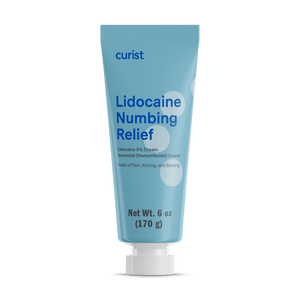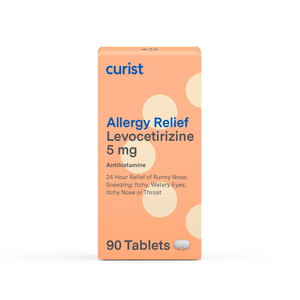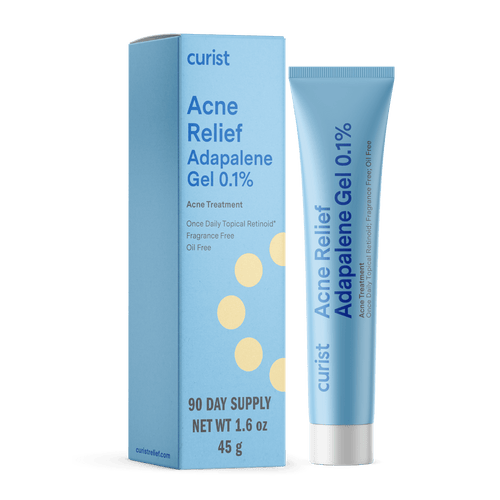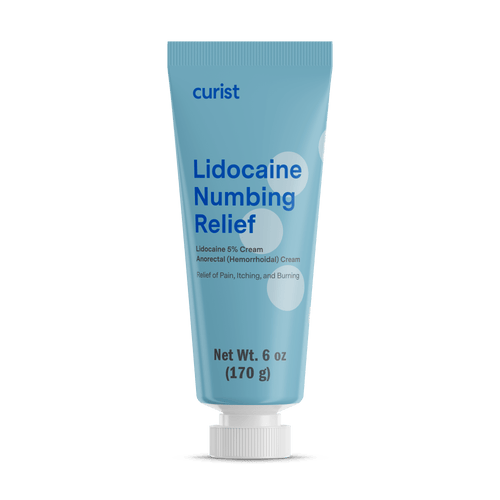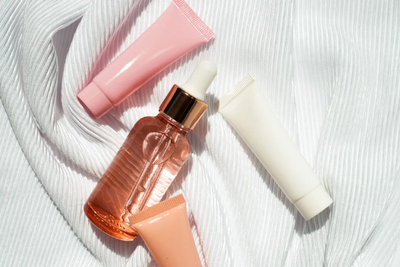By Dr. Allison Dinh, PharmD, Curist Pharmacy Advisor
Curist delivers over-the-counter medicines to your door at a fraction of the price of traditional brands. We hope everyone stays safe and healthy during this time.
Whether your skin needs are acne or skin texture-related, you may be using adapalene or tretinoin. Let’s discuss them!
Are Adapalene and Tretinoin the Same Thing?
Adapalene and tretinoin both fall under the class of medications called retinoids, which are commonly used for their anti-acne and anti-aging effects. Despite being in the same class, they are not exactly the same thing. Retinoids are vitamin A derivatives that help with acne and fight wrinkles in several ways—such as by promoting skin turnover or preventing clogged pores.
Retinoids can be further classified into retinyl esters, retinol, retinaldehyde, and retinoic acid. Adapalene doesn’t quite fall into any of those four categories, but is still a retinoid. It is actually derived from a molecule called naphthoic acid. Tretinoin, however, does fall into a category: It is a retinoic acid, which is the most potent retinoid category.
As a result, even though both adapalene and tretinoin have similar indications and are both topical retinoids, you will find that they each have unique features. Continue reading to learn more!
What are the Differences Between Tretinoin vs Adapalene?
Despite being in the same class and having similar uses for the skin, there are some key differences between tretinoin and adapalene. First, topical tretinoin is FDA-approved for treating acne and signs of aging, such as fine lines, skin roughness, and hyperpigmentation. Adapalene on the other hand, only has an FDA-approved indication for treating acne. However, adapalene is often used for its anti-aging benefits as well.
Another difference is that tretinoin is only available by prescription whereas you can get adapalene 0.1% over the counter (such as Curist Acne Relief)! Therefore, adapalene may be more accessible and is a good starting point for trying a topical retinoid.
Additionally, adapalene is known to be more tolerable than tretinoin, with less severe side effects. In comparison to tretinoin, symptoms that include irritation, redness, and sensitivity are milder.
Is Adapalene Stronger than Tretinoin or Vice Versa?
Tretinoin is considered to be stronger than adapalene. This is because it falls in the retinoic acid class of retinoids, which are very potent due to the fact that they exhibit activity without needing to be converted to an active form. As a result, adapalene may be more tolerable for patients.
However, tretinoin is not the strongest retinoid. Stronger retinoids include isotretinoin and tazarotene. If you are considering a higher strength retinoid such as one of these, be sure to talk to a dermatologist about incorporating it into your routine because it may cause more irritation than a lower strength retinoid.
What’s Best for Acne: Adapalene vs Tretinoin?
In a number of studies, both adapalene and tretinoin have been shown to have similar efficacy when used to treat acne. For instance, adapalene has been found to be comparable to tretinoin 0.025% gel and tretinoin 0.05% cream. In a comparison of adapalene 0.1% and tretinoin 0.05% gel, tretinoin has the advantage when it comes to treating acne. In summary, tretinoin may have a slight edge in combating acne. However, it is important to remember that each person is unique with their own skin needs. Specifically, tretinoin may be more irritating for you.
What’s Best for Wrinkles: Adapalene vs Tretinoin?
Adapalene and tretinoin are both often recommended for combating wrinkles, fine lines, dark spots, and other marks of aging. Between them, however, tretinoin is the more potent option and is FDA approved for treating signs of aging unlike adapalene. Keep in mind, however, that the potency may come at a cost—tretinoin has a tendency to be irritating, which may be bothersome for some people. Adapalene, on the other hand, is more tolerable and has fewer side effects, though it is not FDA approved for treating signs of aging.
Can I Use Adapalene and Tretinoin Together?
Typically, patients take either adapalene or tretinoin. Adapalene and tretinoin are not often used simultaneously because they are both retinoids, so combining the two may have a redundant effect. Furthermore, it would be difficult to determine how you tolerate each product if they were used at the same time. It is best to choose one and test it out for a few weeks and then try the other if desired. In theory, it is possible to use both, but in practice it’s not advised.
Can I Use Adapalene and Tretinoin Alternatively?
Yes you can! It’s a great idea to try one product first for a few weeks and see how you react to it and then test the other. Everyone is different so it is good to take a personalized approach. Alternating between adapalene and tretinoin can help you see which is best for your acne or anti-aging needs.





